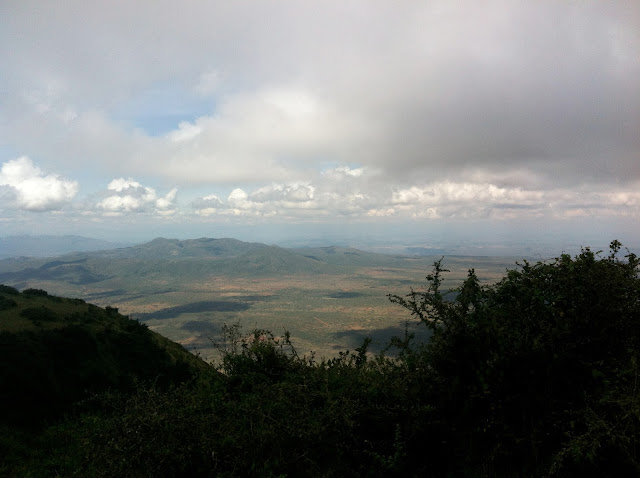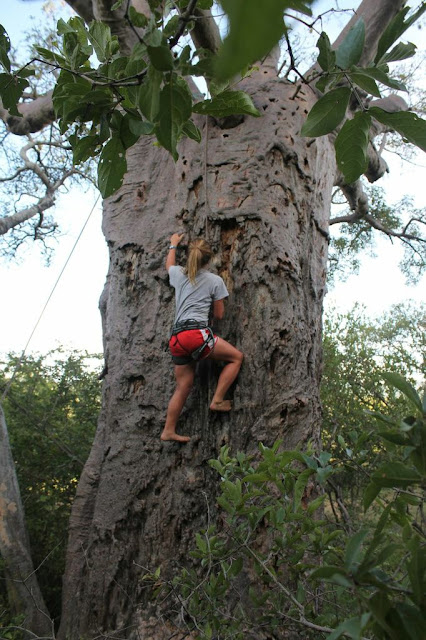Fortunately, it would seem this weekend was one of sister successes on multiple fronts. Good Friday started out with more great news from my urban home stay family as my sister, Shiko, has been accepted to the St. Lawrence University class of 2017! Not only is this excellent news for Shiko and the family, but it's great to know that next year I'll have someone to share my Kenya homesickness with. While she is not entirely sure she will attend SLU and is still waiting to hear back from several other schools, after the celebration and good time we showed her last night following the breaking of the news, I'm quite confident I'll be seeing a lot of shivering Shiko next year in Canton.
Last night Shiko, Trevor, Nelson, and Sue (my urban home stay family) joined us for supper in welcoming both Shiko and our new Swahili fellow to the greater St. Lawrence family. Much discussion over the meal revolved around our favorite aspects of the close, warm, and welcoming community at St. Lawrence and how proud we are of the close connections and relationships the school fosters between students, faculty, staff, and community members. The entertainment, however, came largely in the form of watching the reactions of our new Laurentians as we explained the cold weather, snow, and the rural middle-of-nowhere-ness that Canton so perfectly epitomizes.
Following dinner Shiko and Trevor stayed on the compound with us as we prepared for a night out in Karen. Several of the girls helped Shiko find an outfit and get ready for the long night of dancing out on the town, while many of us guys simply kicked back with Trevor and chilled as we waited for the girls to be ready. The rest of the night spent at the local bar and dance club was marked by smiles, unconventional dance moves involving lots of flailing limbs (ahem...Sophie), mingling with the locals, and enjoying the local fare.
 |
| Family picture to celebrate Shiko's acceptance to SLU and first night out with her new SLU family. |
Following the exciting night out on the town with Trevor, Shiko, and the gang, I woke bright and early at 7:00 to prepared for my much awaiting round of golf with Dr. Wairimu, our program director. In a somewhat twisted testament to the lack of concrete timelines in Kenya, she showed up almost an hour and a half later than expected smiling and joking as if the plan all along was to leave at nine. However, in hindsight I'm grateful for this slight delay, as it helped us hit the links as the rainclouds were clearing and the sun was beginning to peek its way through the clouds.
After a lovely half a round of less than stellar strokes, I finally found my swing and managed to salvage a couple pars and a birdie before we finished. An excellent time was had on the beautiful course at Karen Country Club, especially as we had some great laughs over the occasional shanked shots and botched puts on and around the speedy greens. Still, I could not have asked for a better partner and a nicer day to get back into the swing of things. The whole round, however, I was channeling Grandpa in the back of my mind with his famous words of wisdom, "Keep your head down and watch the club hit the ball. The rest of us will tell you where it goes. Just watch the club hit the ball."
 |
| Dr. Wairimu and I on the ninth fairway on the approach to the clubhouse. |
 |
| Photo credit: Julia Hall |
Abby, Julia, Haley, Emma, and I spent the afternoon playing with some of the children of the home and the experience proved truly heartwarming. While some of the babies were barely able to hold their own heads up, they were all happy to spend the afternoon with us and we shared many laughs and smiles.
 |
| Meet Valentine, a precious little angel who I spent much of the afternoon with. Photo Credit: Abby Martin |
 |
| Emma's new best friend, Joseph reaching for the camera. Photo credit: Julia Hall |
Homemade Nachos and Bruschetta
While many of us went out for dinner tonight, a group of us decided to cook our own dinner, instead. After scouring the local supermarkets for tortilla chips and some suitable cheese, we returned to the compound to start cooking. Jamming out to some great tunes courtesy of Sadie, we prepared some salsa and grated enough cheese that it's a miracle I still have my finger tips. Despite a harrowing ordeal turning on the barbaric stone-age oven, our nachos and bruschetta came out splendidly, and we all enjoyed the home-cooked food we've been craving so badly.
While many of us went out for dinner tonight, a group of us decided to cook our own dinner, instead. After scouring the local supermarkets for tortilla chips and some suitable cheese, we returned to the compound to start cooking. Jamming out to some great tunes courtesy of Sadie, we prepared some salsa and grated enough cheese that it's a miracle I still have my finger tips. Despite a harrowing ordeal turning on the barbaric stone-age oven, our nachos and bruschetta came out splendidly, and we all enjoyed the home-cooked food we've been craving so badly.
 |
| Our dinner crew. From left: Kate, Haley, myself, and Sadie Wolfman Thompson. Photo credit: Julia Hall |

























